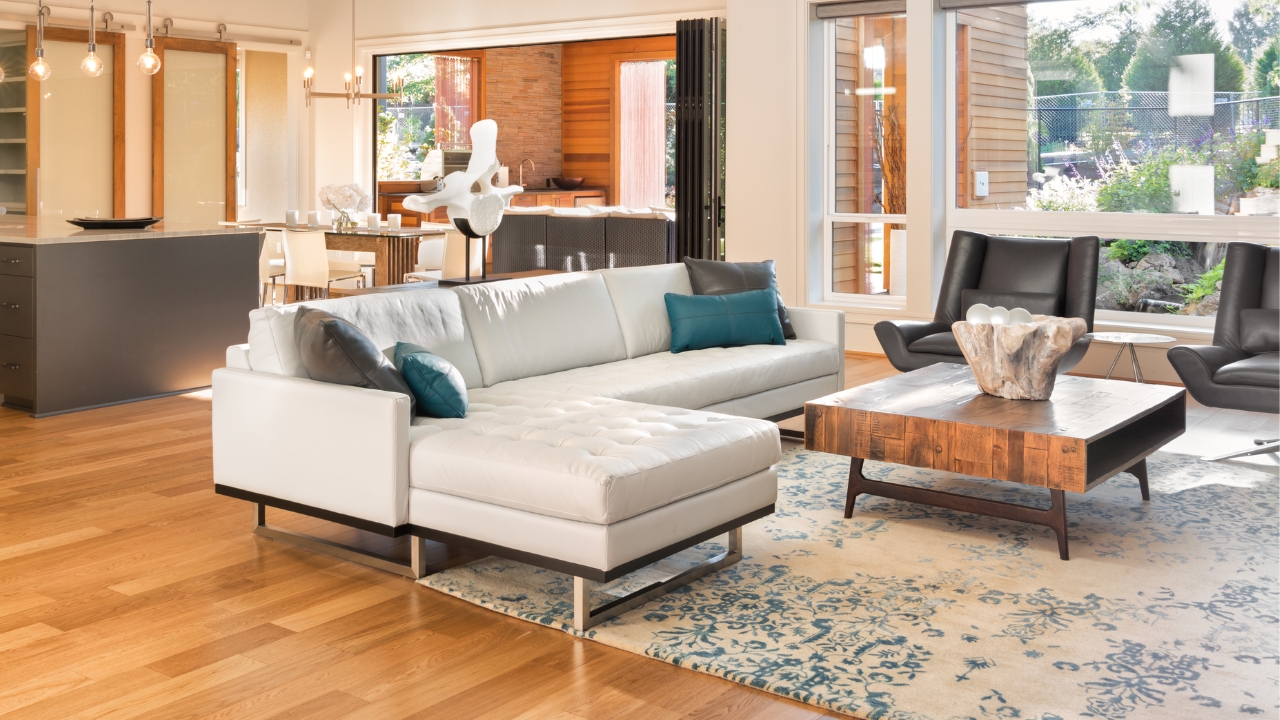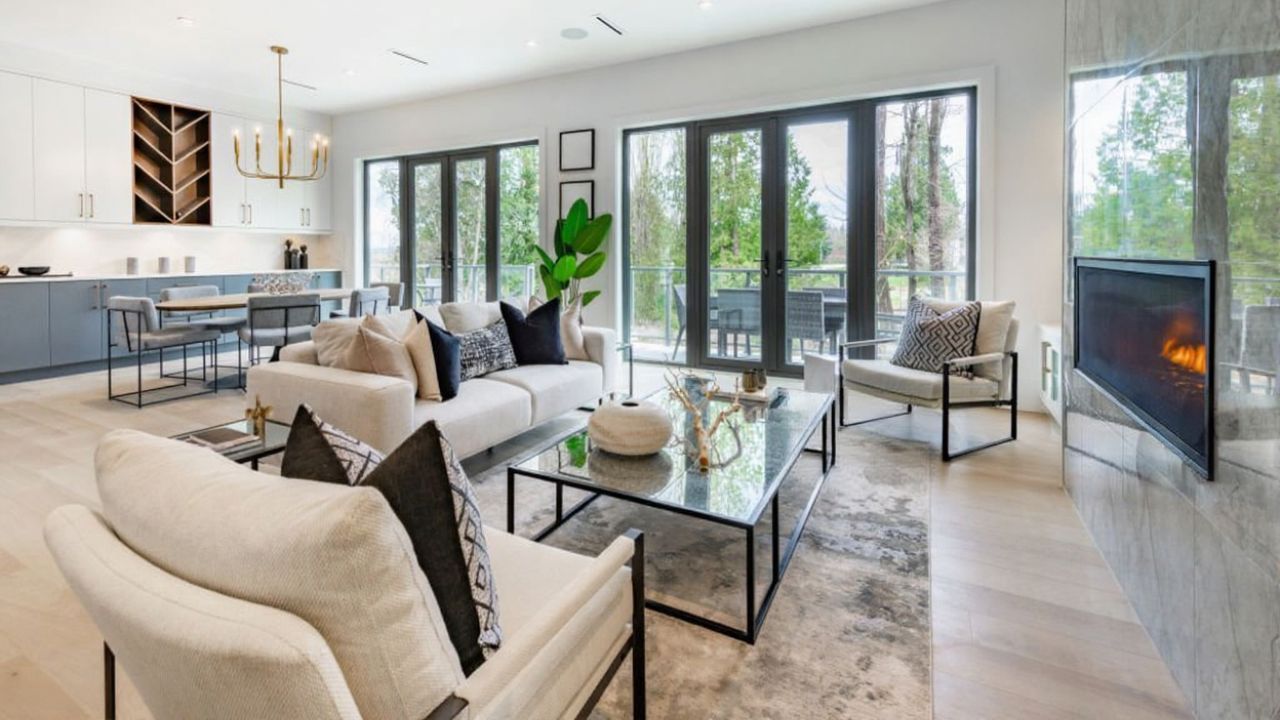The trick that separates a “nice house” from a “magazine house”
There’s a big difference between a house that looks nice and one that makes people stop and stare. You can have beautiful furniture, coordinated colors, and a tidy layout, but something about it still feels flat. Then you see those magazine-worthy homes—the ones that somehow look layered, lived-in, and perfectly finished—and you wonder what they’re doing differently.
The trick isn’t money. It’s styling with intention. Designers treat every corner like part of a bigger picture, while most people stop right before that final layer that ties everything together.
The last 10% makes all the difference
You can buy the same furniture, paint colors, and decor as a staged home and still not get the same result. That’s because designers never stop at the basics. Once the main pieces are in place, they fine-tune—the spacing, proportions, textures, and how everything interacts under natural light. That last 10% is what turns a nice room into a magazine-worthy one.
A couch on its own looks fine. A couch with the right throw blanket, pillow combination, and a small side table holding a book and lamp looks finished. The difference is subtle, but it changes the way the entire room feels. Designers see those finishing touches as part of the design, not an afterthought.
Lighting layers transform everything
Lighting is one of the easiest ways to tell a “nice” house from a “designed” one. Most homes rely on a single overhead fixture or whatever came standard when the house was built. Magazine homes use light like an art tool—layered and intentional. There’s ambient lighting for overall warmth, task lighting for function, and accent lighting to draw your eye where it belongs.
If your rooms feel flat, it’s probably not the decor—it’s the lighting. Swap bright white bulbs for warm tones, add a lamp or two in darker corners, and pay attention to how light reflects off your walls and floors. The soft glow from multiple sources adds depth, making your space look more inviting and balanced.
Scale and proportion are quietly doing the work

A lot of homes look “off” without anyone being able to pinpoint why. Nine times out of ten, it comes down to scale. Designers understand how to balance proportions—how big your rug should be compared to your sofa, how tall your curtains should hang, or how far artwork should sit from furniture. When these details are wrong, your eye notices even if your brain doesn’t.
For example, hanging curtains closer to the ceiling makes windows look taller and rooms feel larger. Using a rug that extends under all the main furniture pieces grounds the space instead of making it feel chopped up. None of these details cost more money—they just require paying attention to scale the way a designer would.
Texture and contrast bring a room to life
You can have the perfect color palette, but if everything is smooth and matching, it’ll feel flat. Designers know that texture and contrast are what bring warmth and depth into a home. A mix of materials—wood, metal, fabric, stone, greenery—gives your eye something to land on. It’s what keeps a space from feeling staged or sterile.
If you want your home to feel professionally styled, add texture where it matters: a woven basket by the couch, a linen throw on the bed, matte finishes beside glossy ones. Even pairing light walls with darker furniture or black hardware creates the kind of contrast that photographs beautifully.
Everything looks intentional—even the casual stuff
What makes magazine homes so appealing is that nothing feels random. Even the most relaxed spaces feel thoughtfully put together. Books are stacked neatly, throws are draped in a way that looks natural, and everyday items double as decor.
You can recreate that by being mindful about placement. Don’t overload your shelves—group items by color or material. Keep your counters clear, then add one or two beautiful things that make sense for the space, like a cutting board and vase in the kitchen or a candle and small tray in the bathroom. It’s not about having more—it’s about making what you have feel purposeful.
The flow feels effortless because it’s planned
In a well-designed home, every room feels connected. Colors transition smoothly, materials repeat subtly, and furniture placement makes sense for how people actually live there. Designers think through the flow early on—how light moves through the space, how furniture aligns from one room to the next, and how people navigate it daily.
If your home feels disjointed, look at how your rooms connect visually. Carry a consistent base tone through the main areas, repeat certain materials like wood or metal finishes, and avoid drastic color changes that break the flow. Even something as small as matching hardware across rooms can make a huge difference.
Details turn lived-in into magazine-worthy
Every “after” photo you see online or in print shares one thing in common—attention to detail. Outlets are hidden, cords are tucked away, curtain rods match door handles, and furniture legs align evenly across the room. It’s not perfection—it’s consistency. Those quiet details tell your brain the space is cohesive and complete.
If you want your home to give that same impression, take a slow walk through each room. Look for the small things that feel unfinished—an uneven picture frame, a lamp cord that stands out, or a decor piece that doesn’t really fit. Fixing those details has a bigger impact than buying anything new.
A “magazine house” isn’t unrealistic—it’s practiced

The truth is, the homes that look perfect in photos didn’t start that way. They became that way through layering, tweaking, and noticing what works. Designers have trained themselves to see what most people overlook—but you can train your eye too.
A magazine-worthy home doesn’t require a bigger budget—it requires patience, intention, and a willingness to adjust the details until they click. Once you start looking at your space the way a designer would, your home won’t just look nice—it’ll finally feel finished.
Like Fix It Homestead’s content? Be sure to follow us.
- I made Joanna Gaines’s Friendsgiving casserole and here is what I would keep
- Pump Shotguns That Jam the Moment You Actually Need Them
- The First 5 Things Guests Notice About Your Living Room at Christmas
- What Caliber Works Best for Groundhogs, Armadillos, and Other Digging Pests?
- Rifles worth keeping by the back door on any rural property
*This article was developed with AI-powered tools and has been carefully reviewed by our editors.







